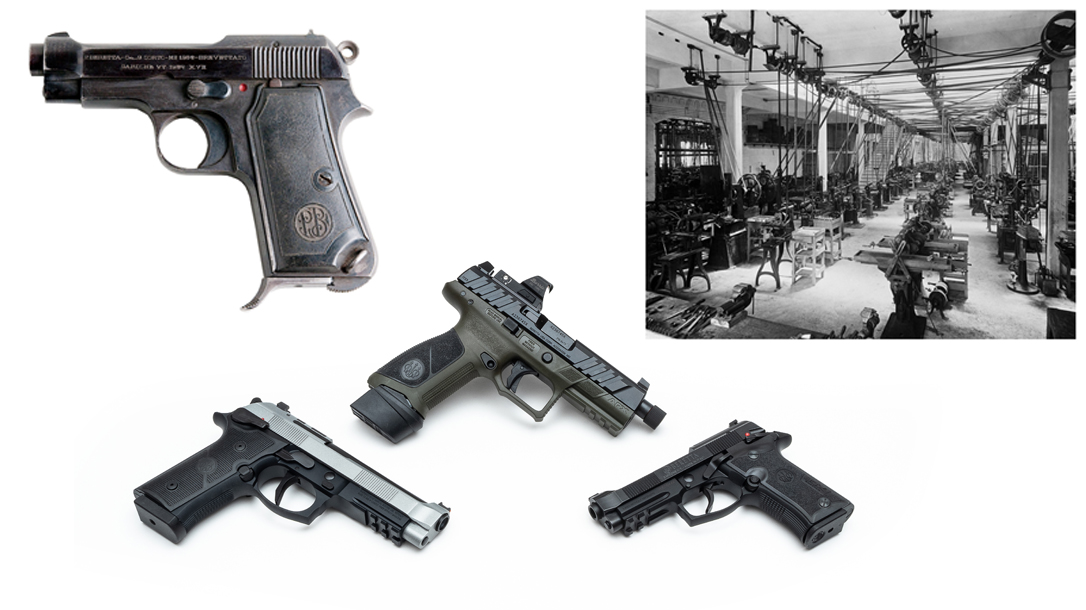In 2026, just a couple of years from now, an icon of the firearms industry will celebrate its 500th birthday. Fabbrica d’Armi Pietro Beretta supplied 185 arquebus barrels for 296 Ducats to the arsenal of Venice in 1526. From there, the rest is history. While Beretta is believed to have started around 1500, the earliest recorded document found details this transaction that occurred in 1526 and marks the company’s first milestone as a preeminent manufacturer of arms to the world. In fact, the company simply known in the U.S. as Beretta is the oldest manufacturer of any kind in the world still under continuous operation.
History of Beretta: The World’s Oldest Manufacturer
That’s heady stuff when you consider that in a time of space exploration, instantaneous world-wide communication and artificial intelligence that a company that was around during the time of Shakespeare and Michelangelo is still manufacturing some of the finest and most recognizable firearms in the industry. Originating in Gardone Val Trompia in Italy, where the Beretta family had been working the iron ore since the 1400s, the firearms concern got its start producing barrels and other components that was sourced by other firearms companies of the times.
Beretta followed this model of producing parts, mainly barrels, for other firearms companies for a few centuries until the 1800s. Its then current leader, Guiseppe Beretta, expanded the company’s business by networking extensively through Europe and by moving the company in the direction of producing complete firearms rather than just manufacturing barrels. This was also the time when Beretta began to focus on the commercial market for sporting arms rather than just focus on military orders.
Advertisement — Continue Reading Below
During the last 150 years, Beretta has produced a variety of highly regarded firearms of all types, from pistols to shotguns to automatic and semi-automatic rifles. Under the supervision of Tullio Marengoni, the company produced the Beretta Model 15 pistol that was designed and manufactured for the Italian military during the first world war. The company is also credited with the world’s first sub-machine gun, the Beretta Model 1918 with its top-feed magazine system. Also used by the Italian military was the Model 1934 in 9mm Corto (.380 ACP), and it’s a highly prized example of one of the best pocket pistols of all time.
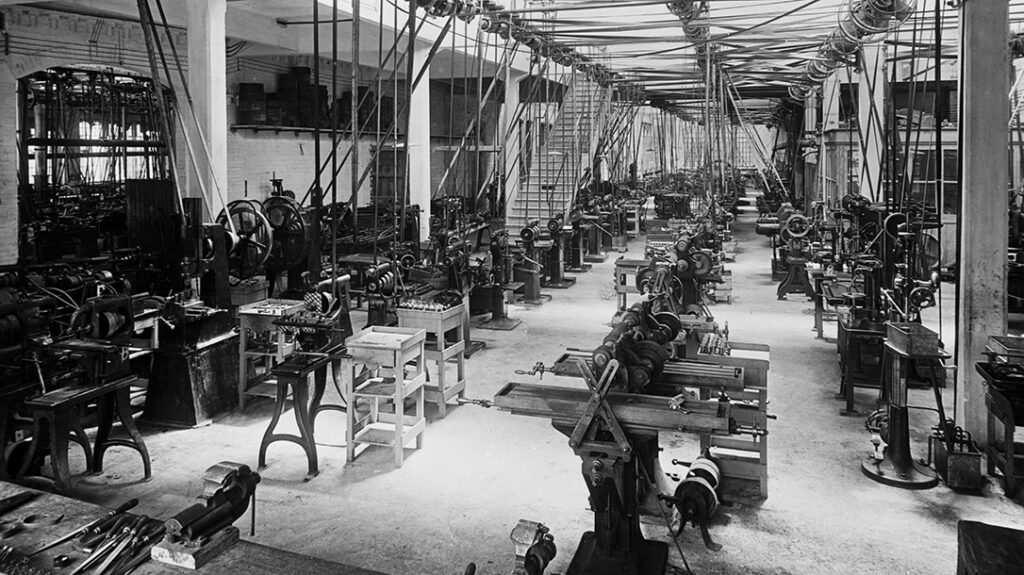
Shotguns to EDC
Beretta put its stamp on the shotgun world with the introduction of the Sovrapposti in 1935. It was the company’s first over-under shotgun that, while cost effective, was marketed as a high-end, side-lock gun. And of course, there’s the venerable Beretta 92 which served as the US military’s issue sidearm for 35 years. The 92 is perhaps the most universally recognized Beretta firearm in the world, but that hasn’t stopped the company from innovating and moving forward. The recent introduction of the company’s highly regarded shotgun, the 1301 Tactical, and its new line of APX polymer-framed pistols denotes the company’s dedication to continued innovation despite its weighty history.
Advertisement — Continue Reading Below
This brings us to the delicate balance Beretta has to strike between honoring its legacy as a designer of elegant and highly functional firearms and knowing when to shed more staid ways of doing things to be able to drive forward and compete in today’s modern marketplace. There’s an expression that says, “Time waits for no man.”
That’s also true of companies as well, and in my opinion, Beretta has navigated its course brilliantly. As we’ll see with a few pistols we survey in this article, the company continues to innovate with designs that meet the needs of today’s firearms enthusiasts while still giving a nod to the company’s rich history as we’ll see with the 80X Cheetah and the 92XI SAO. At the same time, as we’ll see with the APX A-1 Tactical, Beretta demonstrates its willingness to forge a new path in a way that leaves some of their past behind.
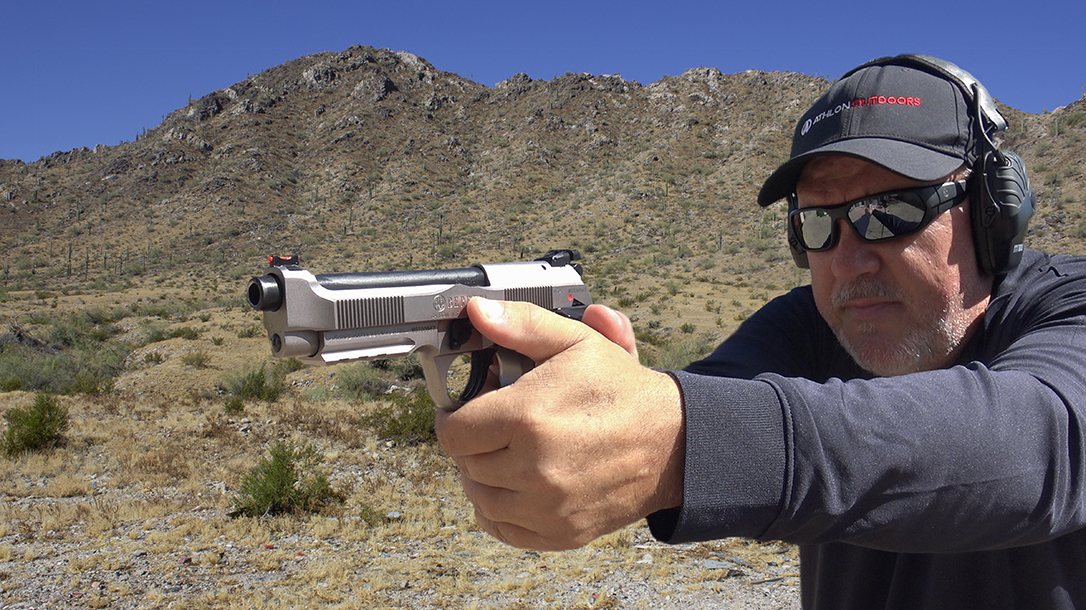
Advertisement — Continue Reading Below
Refreshing History
The 80-series Cheetah, introduced in 1976, remains a popular lineup of Beretta pistols. The first models were the Model 81 and Model 82 in .32 ACP. The Model 81 had a double-stack magazine while the Model 82 had a single-stack mag. However, the Cheetah reached the height of its popularity with the .380 ACP versions (83, 84, 85), particularly the double-stack Model 84. The lineup was discontinued in 2017, but Beretta circled back in 2023 with a modern take on the Model 84 with the introduction of the 80X Cheetah.
Still chambered in .380 ACP, the 80X Cheetah retains the styling and design cues of the original Model 84 (and the open-top profile of the 92) while integrating some much-needed refinements and modern amenities that today’s buyers want in a defensive pistol. First, to aid in concealability and more comfortable carry, the 80X integrates the Vertec frame design popular with the 92 series. The next upgrade was the inclusion of a Picatinny rail to mount a favored weapon light, and there’s a redesigned DA/SA trigger system that offers a cleaner and lighter pull than the original Model 84. Beretta calls this their X-Treme S trigger and there’s no question that it’s much better than the original.
Modern Enhancements
Other enhancements to the 80X, like the new optic slide cut, are a bit contradictory. Beretta dovetails the replaceable front sight. Meanwhile, the rear sight comprises part of the cover plate where the optics mount. Removing the cover plate also eliminates any rear sight to co-witness with the red dot. But if you don’t want to use a red dot, there’s no way to upgrade the rear iron sights that are a part of the cover plate. As long as you’re happy with what’s provided from the factory, then you’re in great shape, but a lot of us like to tinker and this isn’t the best solution for some of us.
Advertisement — Continue Reading Below
The 80X includes some fairly aggressive vertical serrations at the front and rear of its slide for a better grip and easier operation. Similarly, the front and backstraps include machined checkering for a positive purchase to assist with recoil management. The 80X utilizes a frame-mounted safety. The pistol technically carries cocked and locked, but the safety of this condition remains debatable among some. Not to worry, though, since the 80X has a fantastic double-action trigger that registers just a little over six pounds, making the trigger throw very light and extremely smooth.
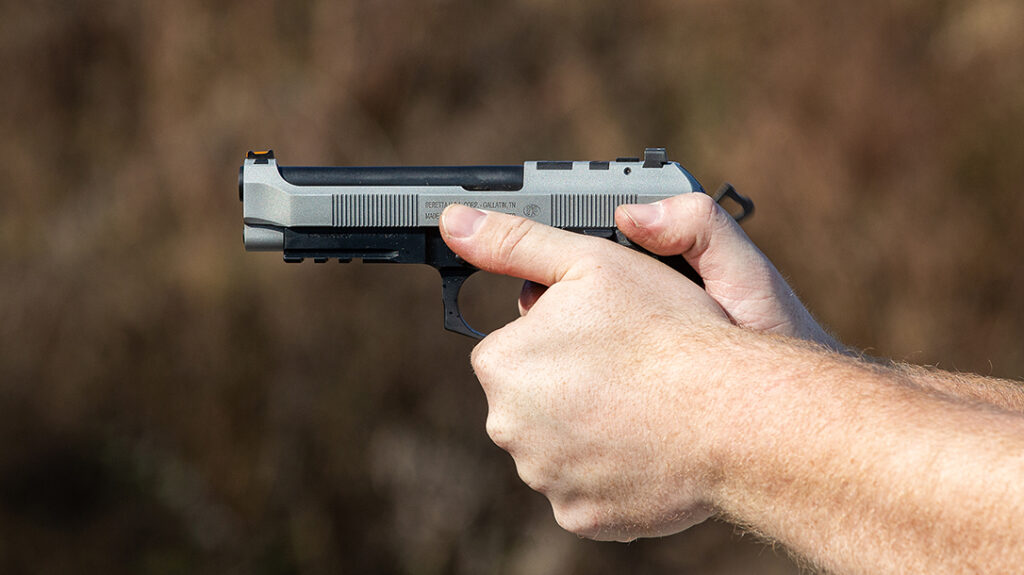
Refining the 92 Platform
The new Beretta 92XI SAO pistol offers the latest iteration of the 92 series. It brings a frame-mounted safety and a Single-Action-Only operating system to the venerated platform–one enjoyed and respected by civilians and veterans alike over the past four decades. Like earlier models in the evolutionary chain, the 92XI SAO integrates the Vertec frame that offers better ergonomics and a shorter trigger reach for a mainstream audience. As with the 92X Performance, the 92XI SAO offers the easier to reach, ambidextrous frame-mounted safety and a consistent single-action pull that breaks at a lighter weight than the more common double-action trigger of the 92 series.
Advertisement — Continue Reading Below
Like the 80X, the 92XI SAO also includes some new features like an optics-mounting system for micro red-dot optics and a new X-treme S trigger system that offers a flat face for easier engagement and a better trigger break. This system includes a skeletonized hammer and DLC-coated components, all of which contribute to a lighter and crisper trigger pull that helps the shooter stay on target for better accuracy. In its literature, Beretta states that the user has the “option” of going cocked and locked. Considering that the 92XI SAO is a Single-Action-Only pistol, going cocked and locked is pretty much mandatory—not an option—unless the user wants to manually cock the hammer before the first shot. This is not an advisable tactic for high-stress situations like defensive encounters.
Shooter Ready
Other amenities on the 92XI SAO include the Picatinny rail for mounting accessories and a fiber-optic front sight for quick acquisition in daylight conditions. Unlike the 80X, both the front sight and the blacked out and serrated rear sight are dovetailed on the 92XI SAO, so the user can opt to swap them out for taller suppressor-height sights should the need arise. The frame includes integral checkering on the frontstrap and backstrap for positive recoil control and it offers a Cerakote finish for protection against the elements. The 92XI SAO is currently available in three SKUs with capacities of either 18, 15 or 10 rounds depending on your jurisdiction or preference.
While Beretta has been great about preserving its history by continuing to offer some of its iconic models, albeit with new twists and tweaks, the company has also embraced the future of firearms via the use of more modern materials and by incorporating new operating systems. The company’s new path displays prominently in the new APX A1 Tactical.
Advertisement — Continue Reading Below
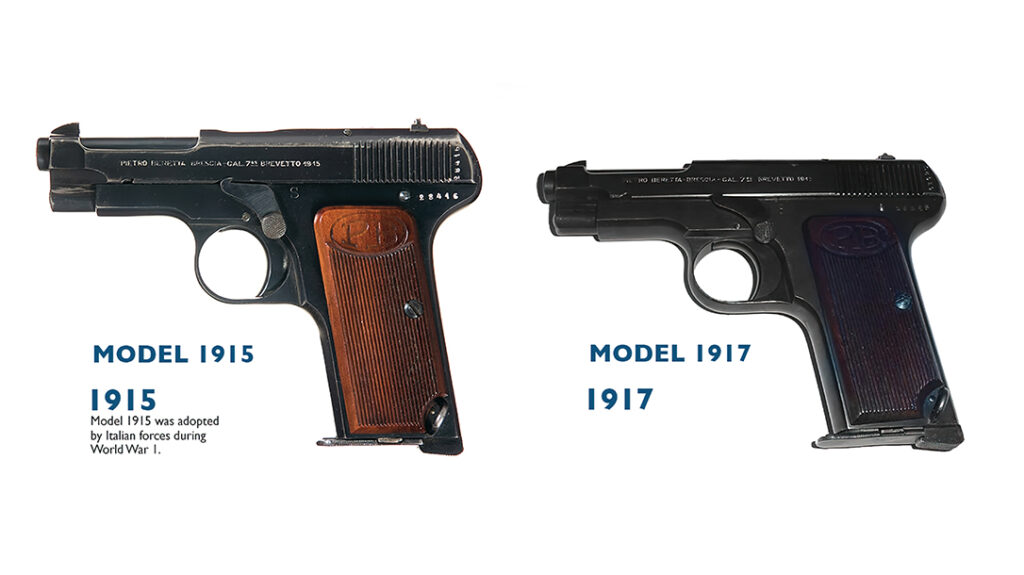
Moving Forward
A variant of the APX A1 family, the new Tactical model showcases all of Beretta’s efforts in developing a cutting-edge fighting pistol that incorporates every feature a user could want in a defensive tool. The APX A1 Tactical features a comfortable and very ergonomic polymer frame–user-adaptable with interchangeable backstraps for a better fit. But the APX A1 series is also a more universally approachable firearm since it includes an ambidextrous slide stop and reversible magazine release for left-handed shooters.
The APX A1 series integrates a striker-fired operating system that includes a flat-faced trigger that offers a very nice and consistent trigger break at around 5.5 pounds of pressure. The flat-faced design of the trigger yields a better pull and the trigger system offers a shorter reset when compared to the company’s more historic pistols. Up top, the slide features aggressive front and rear slide serrations for easy manipulation even with gloved hands and the oversized triggerguard offers plenty of room for gloved fingers as well.
Advertisement — Continue Reading Below
Optics-Ready for Today’s Shooter
The APX A1 Tactical model has a few additional features over the standard configurations, the first of which are the 21-round magazines versus the 17/15-round magazines with the standard full-size models. Blacked out and serrated suppressor-height sights work well when you’ve mounted a can on the 4.8-inch threaded barrel. They also work for co-witnessing with your red dot of choice after mounting it into the factory-standard slide cut via one of the adapter plates available from Beretta. However, the Burris FastFire 4 provided with the APX A1 Tactical by Beretta did not work well for co-witnessing with the suppressor-height sights. So, a little trial and error is in order to find the best solution.
The 92XI SAO and Cheetah 80X are variants of older designs when pistol optics weren’t a thing and that’s why the mounting system seems to be a bit of an afterthought. However, the APX A1 series design incorporates optics, making mounting a red dot a cleaner and easier process. It comprises a much better foundation for your optic of choice. Adapter plates for the most popular red-dot units on the market are available from Beretta, though none are available in the box with the pistol. The user will have to order their adapter plate of choice from the company.
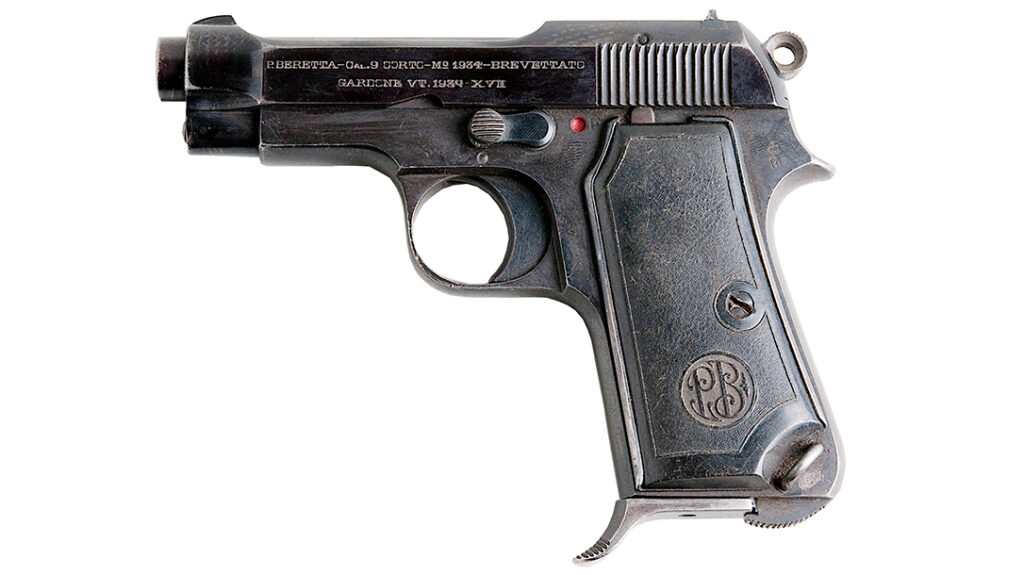
Advertisement — Continue Reading Below
Now and Then
A quick look at Beretta’s recent activity shows that the company isn’t slowing down with its development of new firearms and accessories for the market. The New Assault Rifle Platform (NARP) debuted recently on the A300 Patrol shotgun, APX A1 Tactical Compact and the semi-automatic PMXs in 9mm. In short, it’s clear that Beretta is serious about blazing a path into the future.
However, the introduction of these cutting-edge firearms stands even more interesting because Beretta’s history dates way back before the invention of automobile, the light bulb, and even the steam engine. A lot has changed in the world since 1526, but Fabbrica d’Armi Pietro Beretta has remained relevant and respected for its work by producing quality arms that have met the needs of its customers throughout the centuries. It’s a true story for the ages and hopefully a sign that the company will continue to innovate and be around for yet another 500 years.
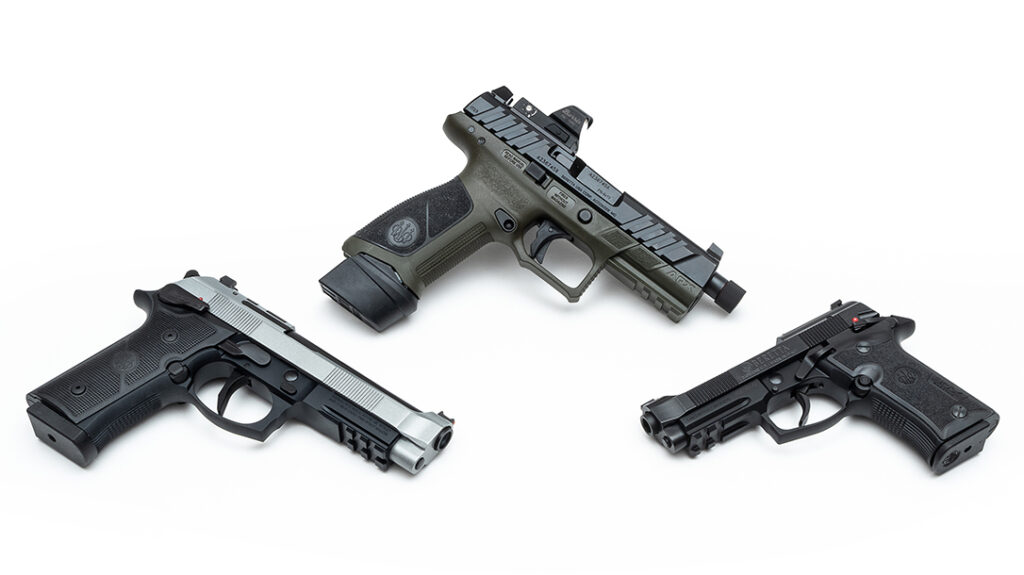
For more information, visit beretta.com.
